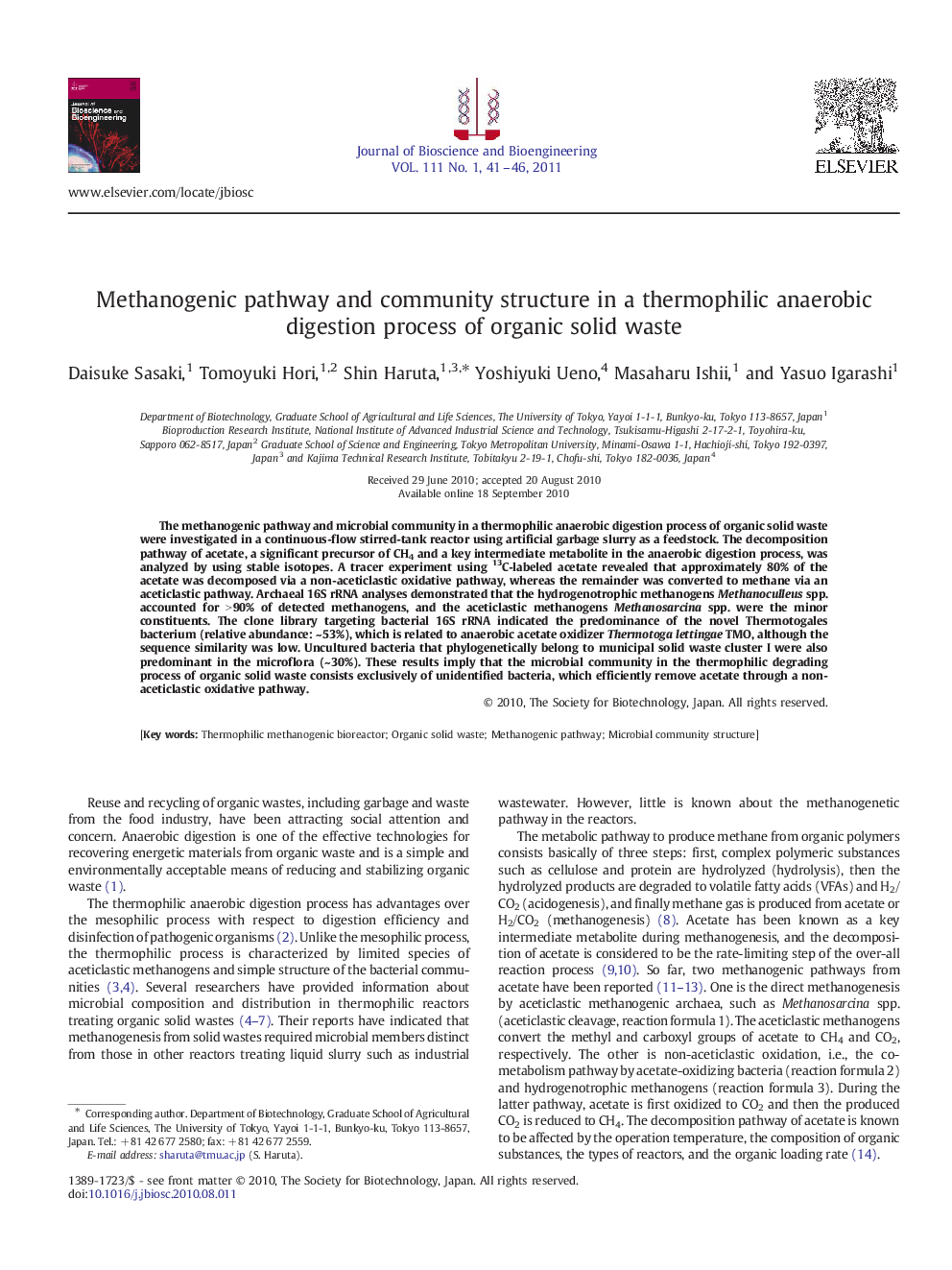| Article ID | Journal | Published Year | Pages | File Type |
|---|---|---|---|---|
| 21120 | Journal of Bioscience and Bioengineering | 2011 | 6 Pages |
The methanogenic pathway and microbial community in a thermophilic anaerobic digestion process of organic solid waste were investigated in a continuous-flow stirred-tank reactor using artificial garbage slurry as a feedstock. The decomposition pathway of acetate, a significant precursor of CH4 and a key intermediate metabolite in the anaerobic digestion process, was analyzed by using stable isotopes. A tracer experiment using 13C-labeled acetate revealed that approximately 80% of the acetate was decomposed via a non-aceticlastic oxidative pathway, whereas the remainder was converted to methane via an aceticlastic pathway. Archaeal 16S rRNA analyses demonstrated that the hydrogenotrophic methanogens Methanoculleus spp. accounted for > 90% of detected methanogens, and the aceticlastic methanogens Methanosarcina spp. were the minor constituents. The clone library targeting bacterial 16S rRNA indicated the predominance of the novel Thermotogales bacterium (relative abundance: ~ 53%), which is related to anaerobic acetate oxidizer Thermotoga lettingae TMO, although the sequence similarity was low. Uncultured bacteria that phylogenetically belong to municipal solid waste cluster I were also predominant in the microflora (~ 30%). These results imply that the microbial community in the thermophilic degrading process of organic solid waste consists exclusively of unidentified bacteria, which efficiently remove acetate through a non-aceticlastic oxidative pathway.
